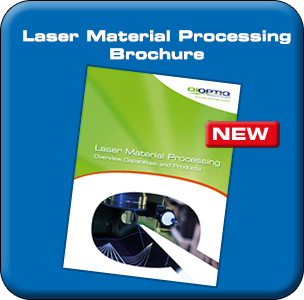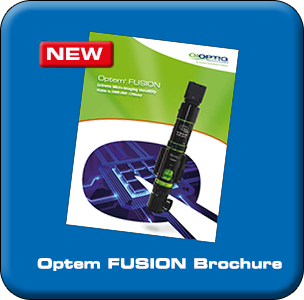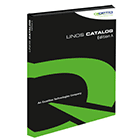- Optomechanics
- Precision Optics
- Singlets
- LINOS Achromats & Lens Systems
- LINOS Laseroptics & Lenses
- LINOS Machine Vision Solutions
- Micro Imaging
- Polarization Optics
- Mirrors
- LINOS Thin Film Coatings
- LINOS Faraday Isolators
- LINOS Laser Modulators & Pockels Cells
- Prisms
- Spectral & Neutral Filters
- Beamsplitters
- Optical Windows & Diffusers
- Optics Software
- Lightsources & Laser
- New Products
Laser Modulators Introduction

Technical Overview
Electro-optical crystals are characterized by their ability to change optical path length in function of an applied external voltage. This change depends on the direction of polarization of the irradiated light. At λ/2 voltage, the path length difference of orthogonally polarized beams is just half of the wavelength. With a suitable orientation of the crystals, the polarization direction of the irradiated light is rotated 90°: in this state the light is extinguished by a polarizer. Varying the applied voltage allows quick modulation of the laser beam intensity. The performance of an electrooptic modulator can be understood very simply as that of a retardation plate with electrically adjustable retardationLM 0202 series modulators use the transverse electro-optic effect: the direction of the light beam and electric field are orthogonal. In this configuration, long crystals with a small cross section have a low halfwave voltage.
Since most of the electro-optical crystals operate with a strong background of natural birefringence, a compensation scheme is used. Each modulator in the LM 0202 series has four crystals as a matched ensemble. These crystals are fabricated with deviations in length less than 100 nm. The crystals are operated optically in series and electrically parallel.
The crystal orientation of the LM 0202 and LM 0202P modulators has been optimized to minimize the retardation caused by natural birefringence. Just as in an ordinary retardation plate, the polarization of the laser beam has to be adjusted at 45° to the optical axis in order to achieve a proper 90° rotation.
If the laser beam is polarized in the direction of the optical axis, no polarization rotation, but pure phase retardation will occur. In principle this allows the user to operate the LM 0202 modulator as a phase modulator. In this configuration, optimized for minimum background retardation, two of the four crystals are electro-optically active for phase modulation. A special model, LM 0202 PHAS, is available with a crystal configuration that uses all four crystals for phase modulation.
The PM 25 phase modulator, is a Brewster modulator of high optical quality and should be used for loss sensitive applications, especially intracavity modulation. Mounting the modulator in the resonator is simple, as there is no beam deviation or displacement.
For all modulators, the beam deflection and beam displacement caused by the natural birefringence is eliminated by using the crystals in compensation configuration.
Electro-optic modulators generally require linearly polarized laser light. If the laser light is not sufficiently polarized by itself, an additional polarizer must be used.
The LM 0202 P intensity modulator has an integrated polarizer that is used as an analyzer.
The modulator voltage input plugs are isolated from the housing and directly connected to the crystals. A change of the laser intensity can be observed when the applied voltage is changed. By subsequently adjusting voltage and rotation, an extinction better than 250:1 can be achieved. Selected models with better extinction ratios are available on request.
Operating an electro-optical modulator between crossed, or parallel, polarizers yields an intensity variation given by the following formula:
I = Io · sin2 (U/Uλ/2 · π /2)
Uλ/2 - half wave voltage
Io - input intensity
U - signal voltage
It has been assumed that the appropriate offset voltage has been applied for maximum extinction. The offset voltage causes a shift of the intensity curve over the voltage. The halfwave voltage is proportional to the wavelength λ, to the crystal thickness d and in reverse proportional to the crystal length l:
Uλ/2 = λ * d / (n03 * r63 * l)
Here n0 is the refractive index of the ordinary beam and r63 the electro-optical coefficient of the crystal. In many cases it is advantageous to select an offset voltage such that the first order intensity varies linearly with voltage. This is achieved by setting the offset voltage to the value required for maximum extinction minus ½ · Uλ/2
The LM 0202 series modulators are hermetically sealed. They can be operated at pressures from 100 mbar to 1500 mbar and at a temperature range between 0°C to 50°C.
Standard models are designed for horizontal operation. Modulators for vertical use are available by request. The modulator windows are easily cleaned with a mild organic solvent.
Applications
The LM 0202 or LM 13 series electro-optical modulators are typically used when intensity, power, phase or polarization state modulation is required. The devices are ideal for continuous or pulsed laser applications. Standard models, in many confi gurations, are available for wavelength ranges or for defi nite wavelengths between 250 to 1100 nm and operation up to 3000 nm is possible with special crystals.
The modulators are typically used with diode lasers, solid state lasers, ion lasers, gas lasers or white light lasers.
These devices are being used in the fields of laser scanning
microscopes, stereo lithography, laser projection, optical storage,
printing, research and development and communication engineering in the
laser industry.
The PM 25 and PM-C-BB series are typically used for fast intra-cavity phase modulation. Therefore very fast control loops, with high feedback gain for frequency and phase stabilization, can be constructed for precision lasers.
Selection Criteria
The required wavelength and aperture are determined based on the existing laser system. Very high laser power, in the multiwatt range, requires a large aperture. Laser lines in the short wave spectral region can work easily with modulators having low electro-optical sensitivity: this gives rise to advantages in bandwidth and size. A Brewster modulator of high optical quality should be used for loss sensitive applications, especially intracavity modulation.







 Order Catalog
Order Catalog